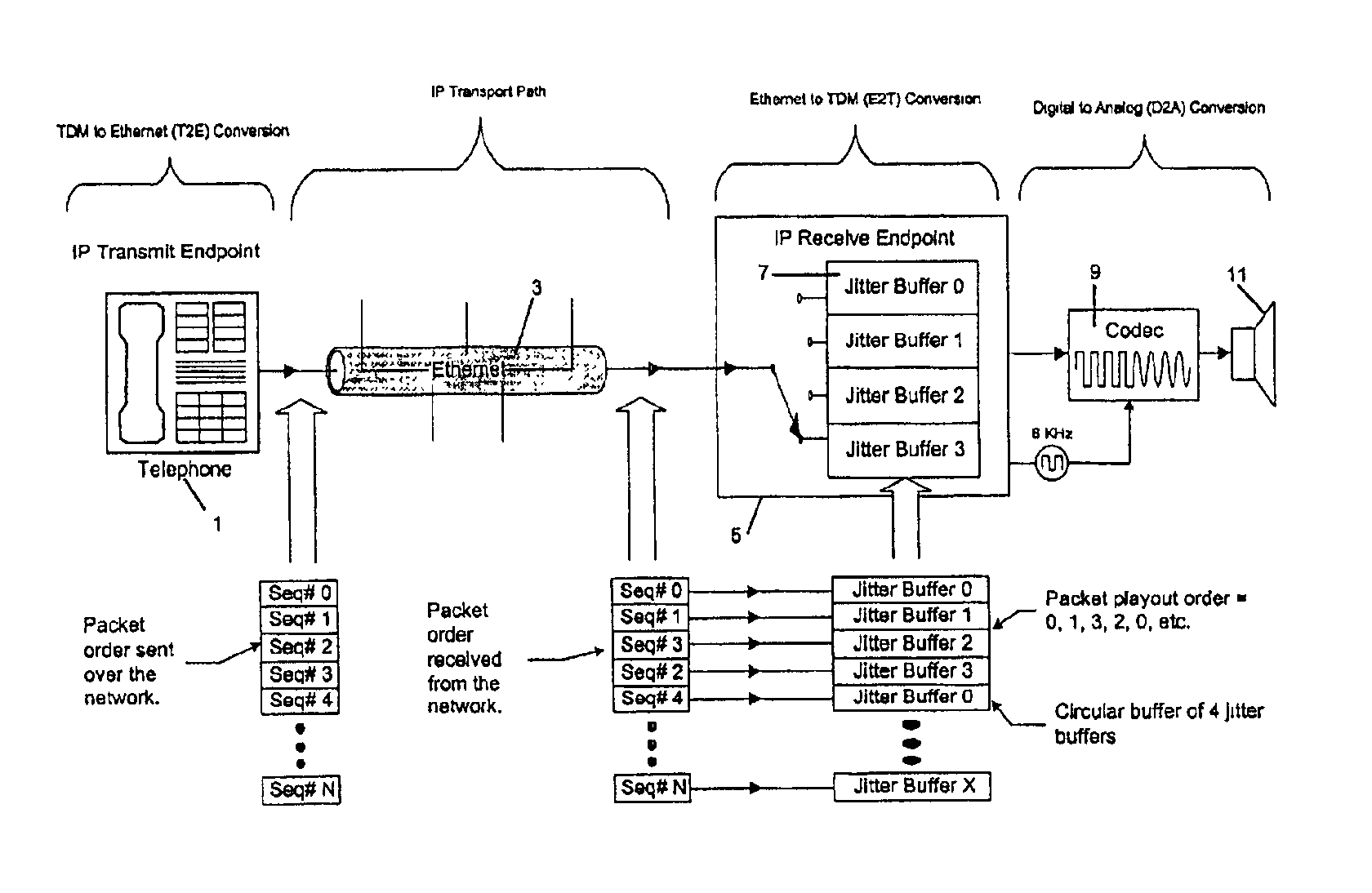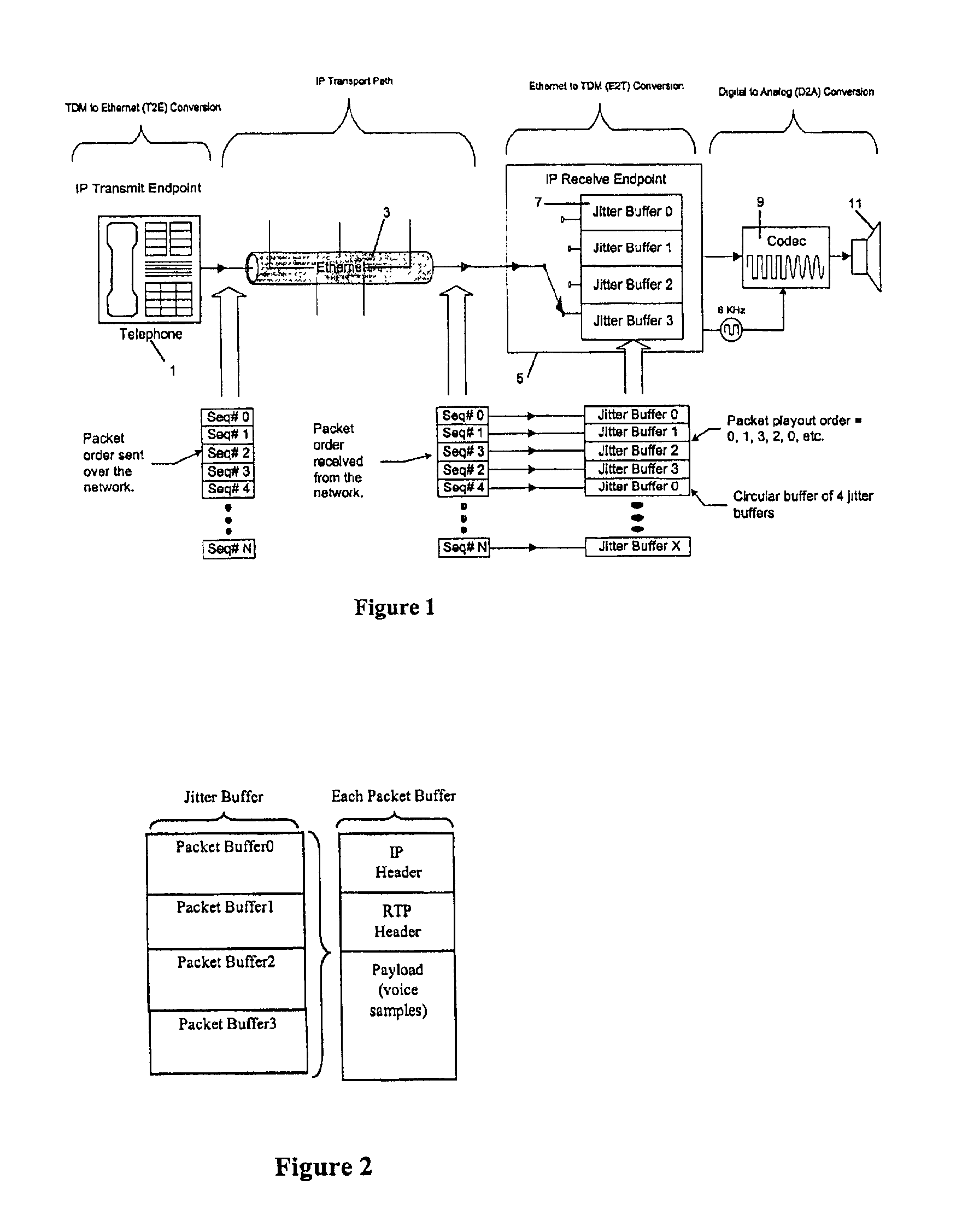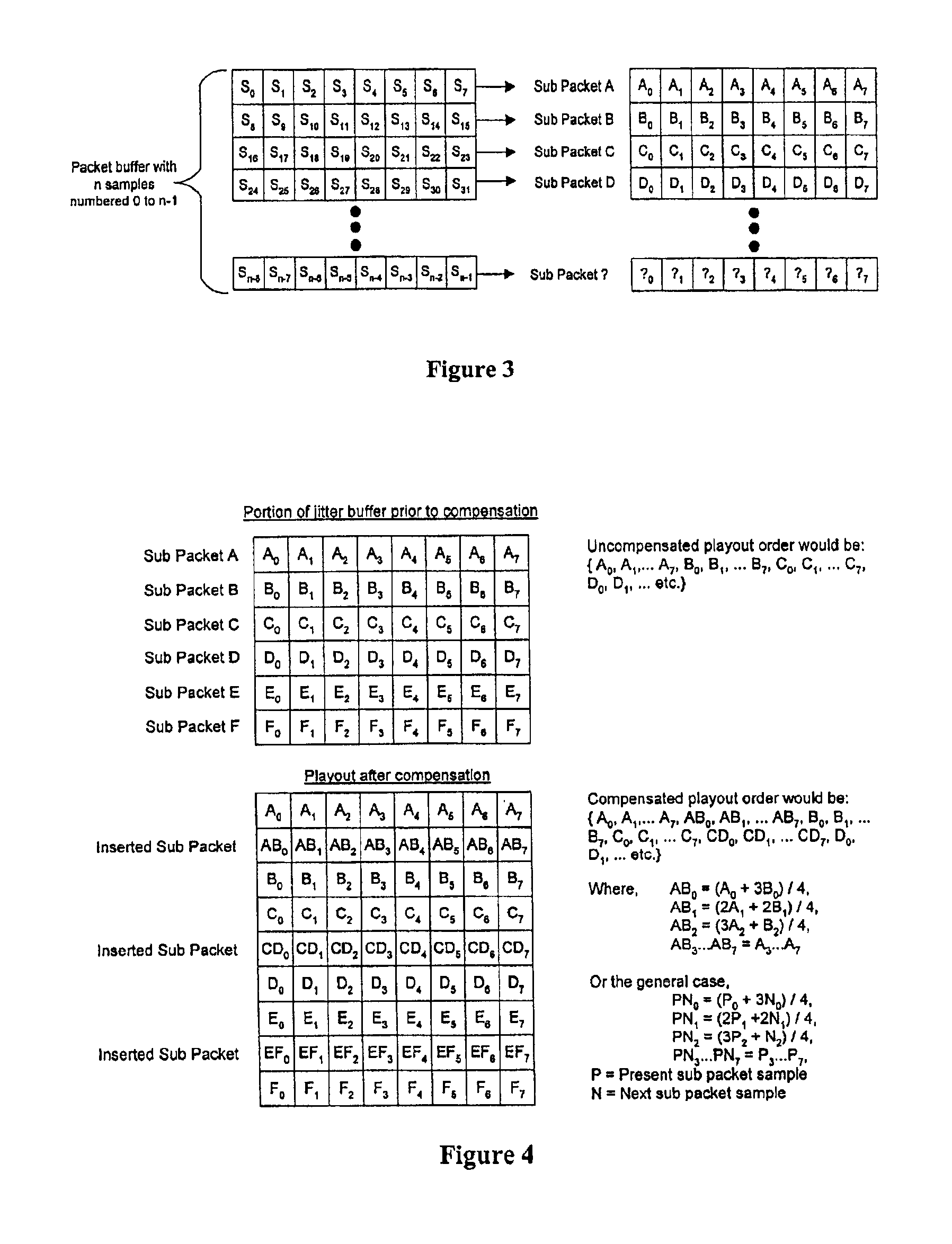Sub-packet insertion for packet loss compensation in voice over IP networks
- Summary
- Abstract
- Description
- Claims
- Application Information
AI Technical Summary
Benefits of technology
Problems solved by technology
Method used
Image
Examples
Embodiment Construction
[0015]The basic features of any voice over IP implementation are a transmitting and receiving endpoint separated by an IP network. The IP network consists of various interconnected elements such as hubs, routers and gateways. From an endpoint perspective, however, the interface is simply a connecting IP cable which can be viewed as a dedicated connection from transmitter to receiver.
[0016]Thus, as shown in FIG. 1, a transmitting endpoint 1 on the IP network simply accumulates samples from its Analog to Digital process (TDM to Ethernet (T2E)) into a packet or payload buffer within the endpoint 1, according to a sequential order. Once the buffer is fall the endpoint transmitter wraps a packet header around the payload and transmits this across the network 3 with appropriate addressing and sequence information in the header, as is well known in the art. The routing information in the header describes the final destination and is attached to each and every packet (e.g. Seq# 0, Seq# 1, e...
PUM
 Login to View More
Login to View More Abstract
Description
Claims
Application Information
 Login to View More
Login to View More - R&D
- Intellectual Property
- Life Sciences
- Materials
- Tech Scout
- Unparalleled Data Quality
- Higher Quality Content
- 60% Fewer Hallucinations
Browse by: Latest US Patents, China's latest patents, Technical Efficacy Thesaurus, Application Domain, Technology Topic, Popular Technical Reports.
© 2025 PatSnap. All rights reserved.Legal|Privacy policy|Modern Slavery Act Transparency Statement|Sitemap|About US| Contact US: help@patsnap.com



